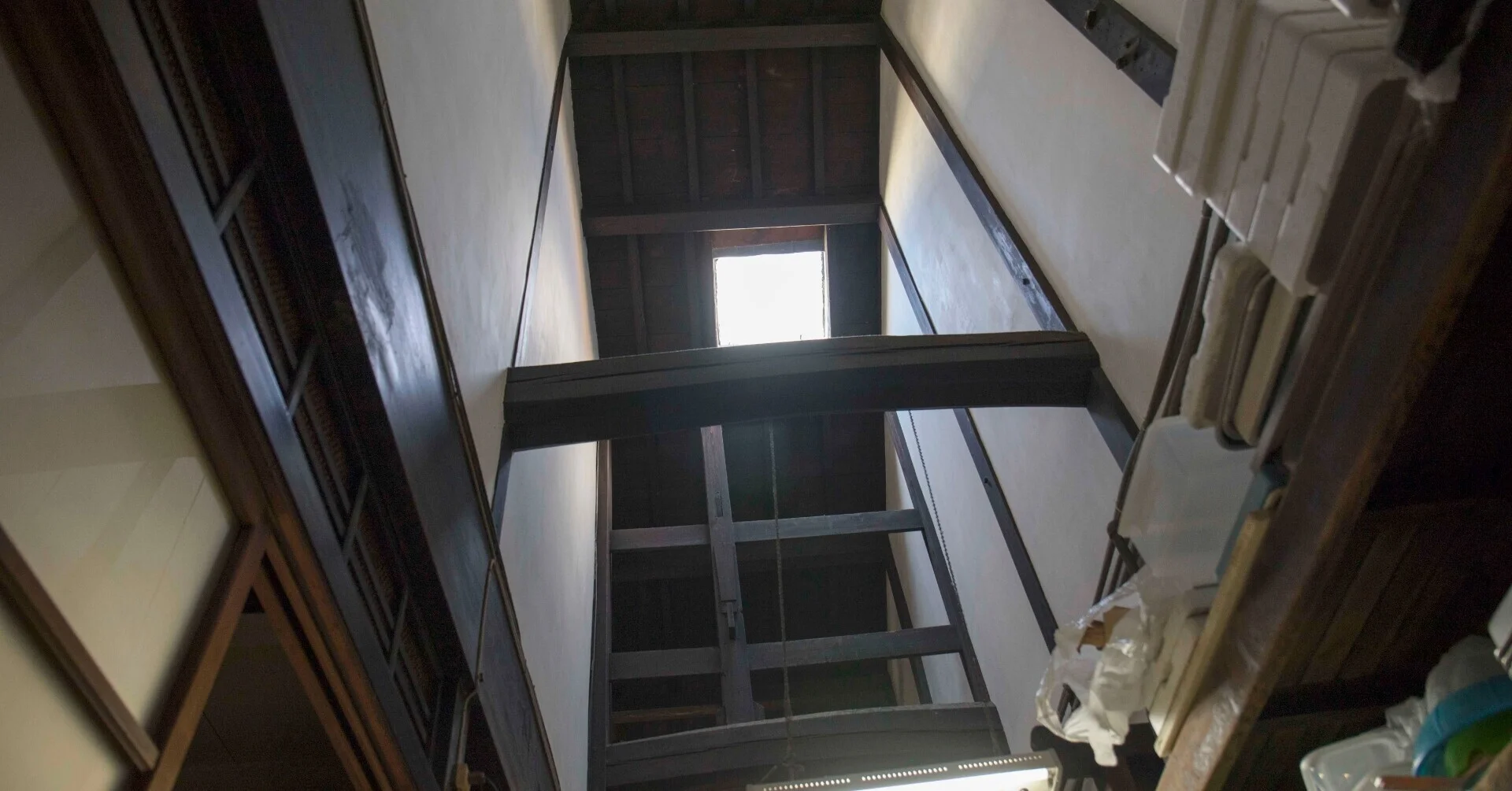
Chairperson, Kyoto Nishiki Market Shopping Center Promotion Association
Mr. Katsumi Utsu, Chairperson of the Board, Masugo Co.
Supervisor, Kyoto Nishiki Market Shopping Center Promotion Association Mr. Takashi Kuwayama, President & CEO, Kuwatou Co.
Former Deputy Chairperson, Kyoto Nishiki Market Shopping Street Promotion Association
Mr. Yuji Shimamoto, Shimamoto Nori Dry Provisions Co.
Chief Director, Kyoto Nishiki Market Shopping Street Promotion Association
Mr. Tomisao Mita, Representative Director, Notoyo Ltd.
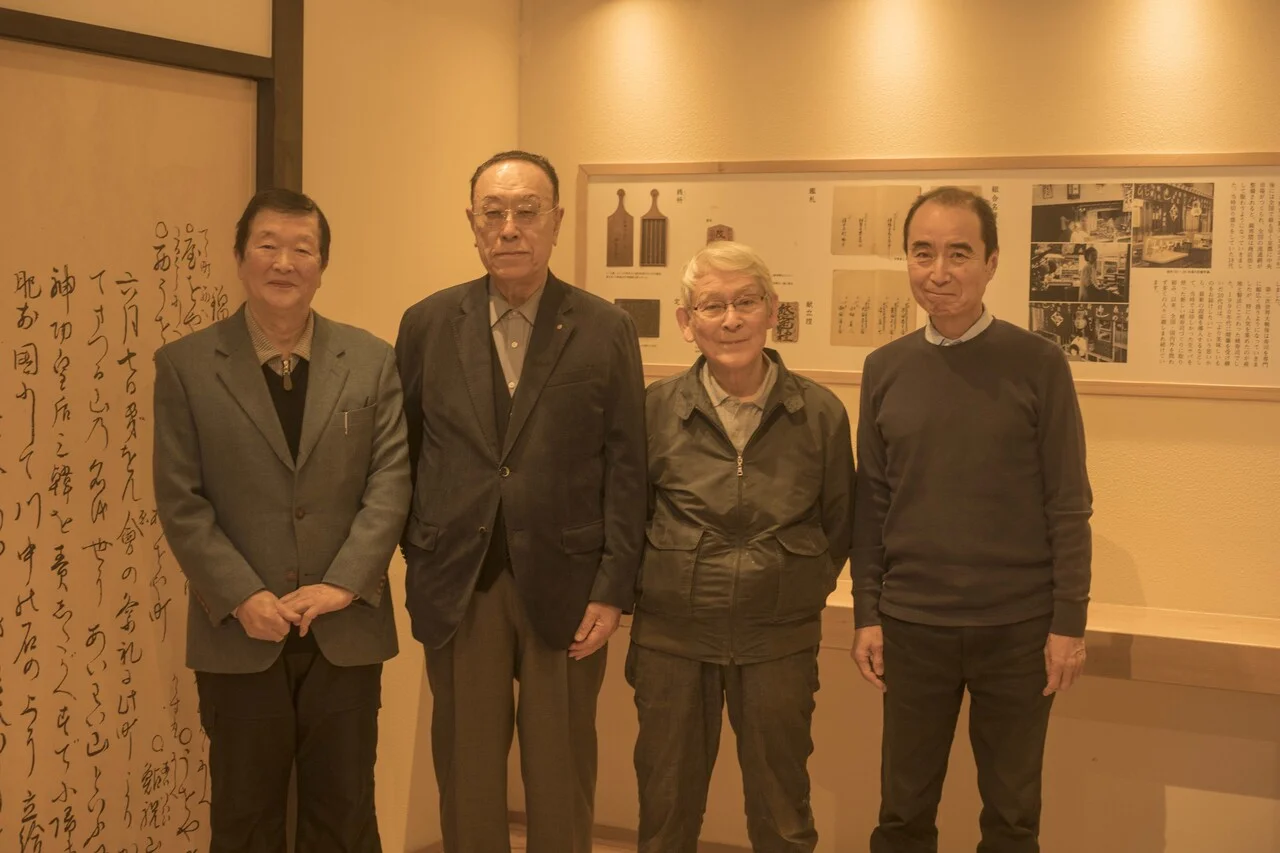
“The story of Nishiki Market cannot be told without mentioning the wells and the community spaces.”
This is the second installment of “Tales of Nishiki.”
As a continuation of the first interview session, we changed the location and also changed the topic to life in Nishiki Market in the old days.
Iyomata, the restaurant where today’s interview took place, has been in business for 400 years. It is the oldest establishment in Nishiki Market.
An old well that one can descend into, known as “oriido,” still remains here. In the middle of this well is a chamber, which was used to store fish in the days when there were no refrigerators. The story of the development of Nishiki Market cannot be told without mentioning the underground water called “Nishiki no mizu” (“Nishiki water”).
It has supported business and daily life in Nishiki to this day.
And at the end of the alley across from Iyomata, there used to be a kaisho (now there is a restaurant called “Tobeian”). The kaisho was a place that functioned like a meeting hall.
“The Jizo Bon Festival (a Buddhist festival for a deity[Boddhisatva] called Jizo) used to be held every year on the 24th day of the seventh lunar month.” “Many parents and children from the district gathered to play cards, and traditional events such as juzu-mawashi (group prayer using a long string of beads) were held from morning till night.“There would be kamishibai storytelling, pachinko stalls, and raffles. There would also be bon dance and plays.” It was a big annual event.
After the kaisho was closed, this Jizo was moved to the corner of Tominokoji and Nishiki Koji (next to “Hokyu-an”), where it continues to be worshipped today.
Actually, there used to be kaisho in three locations in Nishiki Market: Higashi Uoyacho, Naka Uoyacho, and Kajiya-cho. Chief Director Mita says, “A (statue of a) Jizo-san was also placed in Kajiya-machi, but it is now kept at Saido-ji Temple in Ura-dera-machi, and we visit it once a year.”
Chief Director Mita says, “A (statue of a) Jizo-san was also placed in Kajiya-machi, but it is now kept at Saido-ji Temple in Ura-dera-machi, and we visit it once a year.”
At Hozoji Temple in the same Ura-dera-machi district, there is the grave of the famous painter Jakuchu’s family, the Ito family.
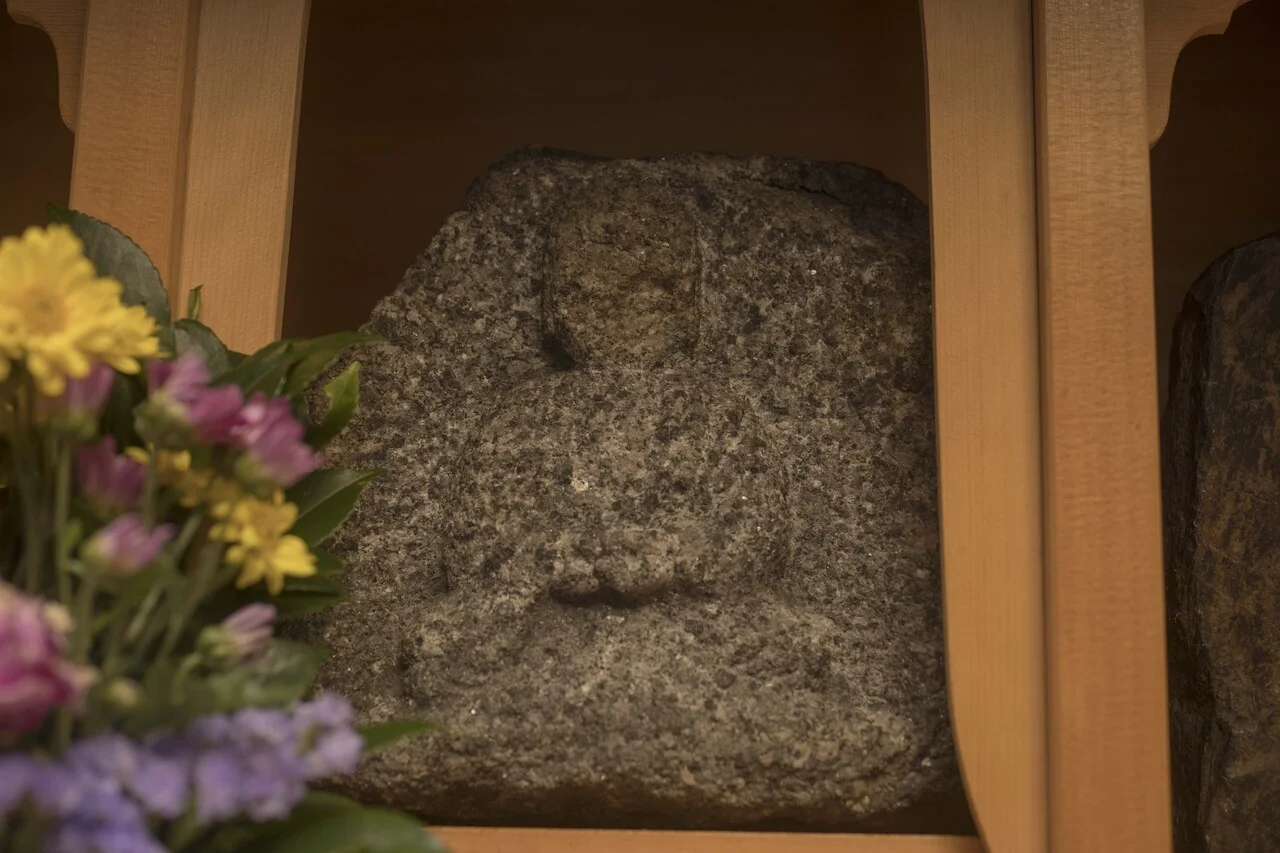
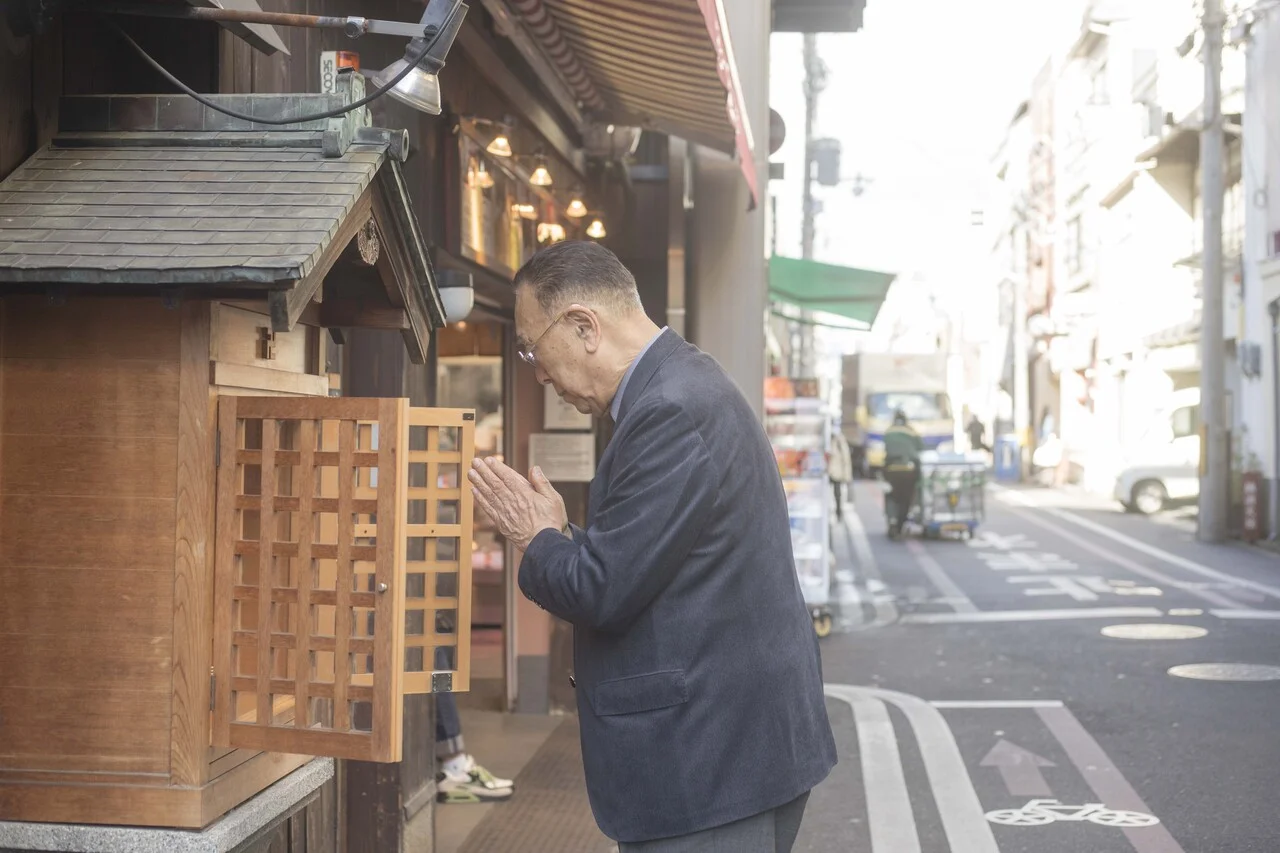
Turning the topic to childhood pastimes other than those during Jizo-bon, the elder members of Nishiki Market reminisced about baseball and roller-skates. “I We played baseball on in a team called the ‘Lions.’”
When they played baseball, Mr. Shimamoto was always catcher and Chairperson Utsu always first baseman. The reason was that Mr. Shimamoto had a catcher’s mitt and Chairperson Utsu had a first baseman’s mitt.
When asked as to why the two of them both had mitts, one of them said, “I think mitts were more expensive than gloves back then. I wonder—maybe both of our families were making a lot of money. Hahahahahaha.” They laughed in unison.
Another interesting story came up. Roller skates were apparently in fashion at the time, and again, the two men owned a pair of Remington roller skates, a luxury brand, that they had bought at a black market.
“There were no cars on the road, and we were performing such feats as speeding up and jumping over manholes.” “We were doing all kinds of crazy things.”
In the old days, there was an apprenticeship system, so there were many live-in workers.
In the old days, stores had an apprenticeship system and employees were supposed to live in the store. Shops that retain the old architectural structure in Nishiki Market still have a type of machiya structure that is called “unagi no nedoko,” which means “bed of eels.” It has a small front facing the street but extends far to the back.
“There were five to six rooms along the passageway leading from the store to the workspace in the back. These included rooms for maids and artisans.” “There were also many female helpers working in exchange for training in proper manners.” “Every morning, the master would first join his hands in front of the altar and pray for good business, and then the busy day would begin.”
“Nishiki Market is deep in greed, but it is also has pure depth.” These were apposite words by Chairperson Utsu to describe both the business-minded nature and the residential architecture of Nishiki Market.
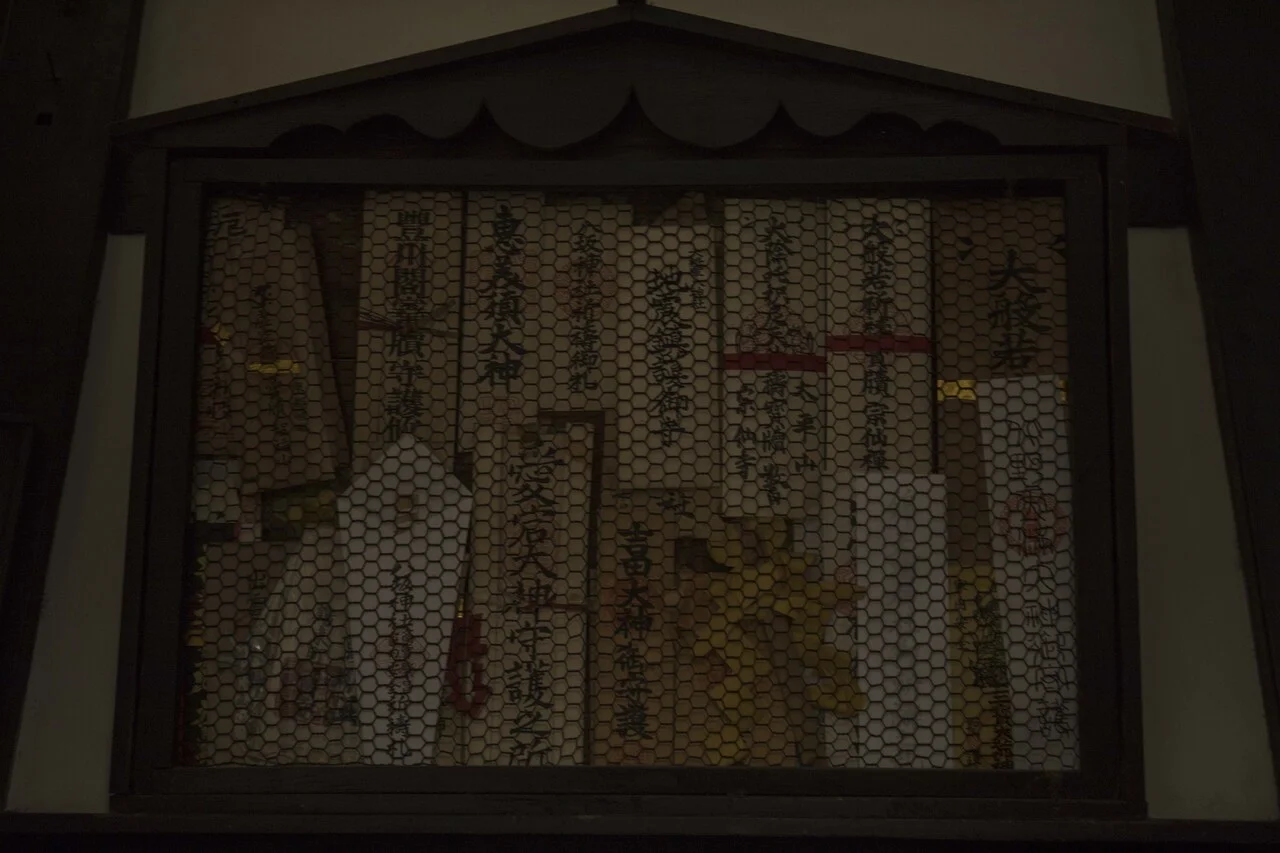
Edo-period life continues in Nishiki.
Today, there are still many stores in Nishiki Market that retain the atmosphere of the old Nishiki Market.
Yamaichi, which I was able to photograph this time, is one of the ten oldest establishments in Nishiki Market, having been in existence since the late Edo period (around the mid-19th century), although there are no exact records of the store’s history.
The store still thaws dried codfish, an essential ingredient for New Year’s cuisine in Kyoto, using the groundwater of Nishiki.
When one goes inside the remaining residential quarters at the rear of the store, one finds a skylight at a high position on the ceiling. In the days when there was no electricity, this must have been the main source of light.
The kitchen, which has not been altered much, seems to have remained unchanged since the Meiji period. A number of large cauldrons that must have been used in the past still remain.
Shinto alters and votive tablets are placed here and there throughout the store, indicating the piety of the merchants.
Outside, a plaster wall with vents is decorated with a small statue of “Shoki-san” (Zhong Kui; a Taoist deity) who is said to ward off evil spirits.
Breathing in the air and closing one’s eyes in this store, one can imagine the life of long ago. The charm and depth of Nishiki Market lies in the fact that there are still stores like this that retain the atmosphere of the days when the market was first established.
I was also shown the back of Kidoairaku, a store next door belonging to a branch of the family who own Yamaichi. An old storehouse and well remain in the back.
Perhaps because this house has been modified somewhat, it has the calm feel of a merchant’s house in contrast to Yamaichi, which has more of the feel of a food-processing business’s house.
They each represent a different atmosphere of daily life in Nishiki Market.
(Note: Please do not enter the back of either store without permission.)
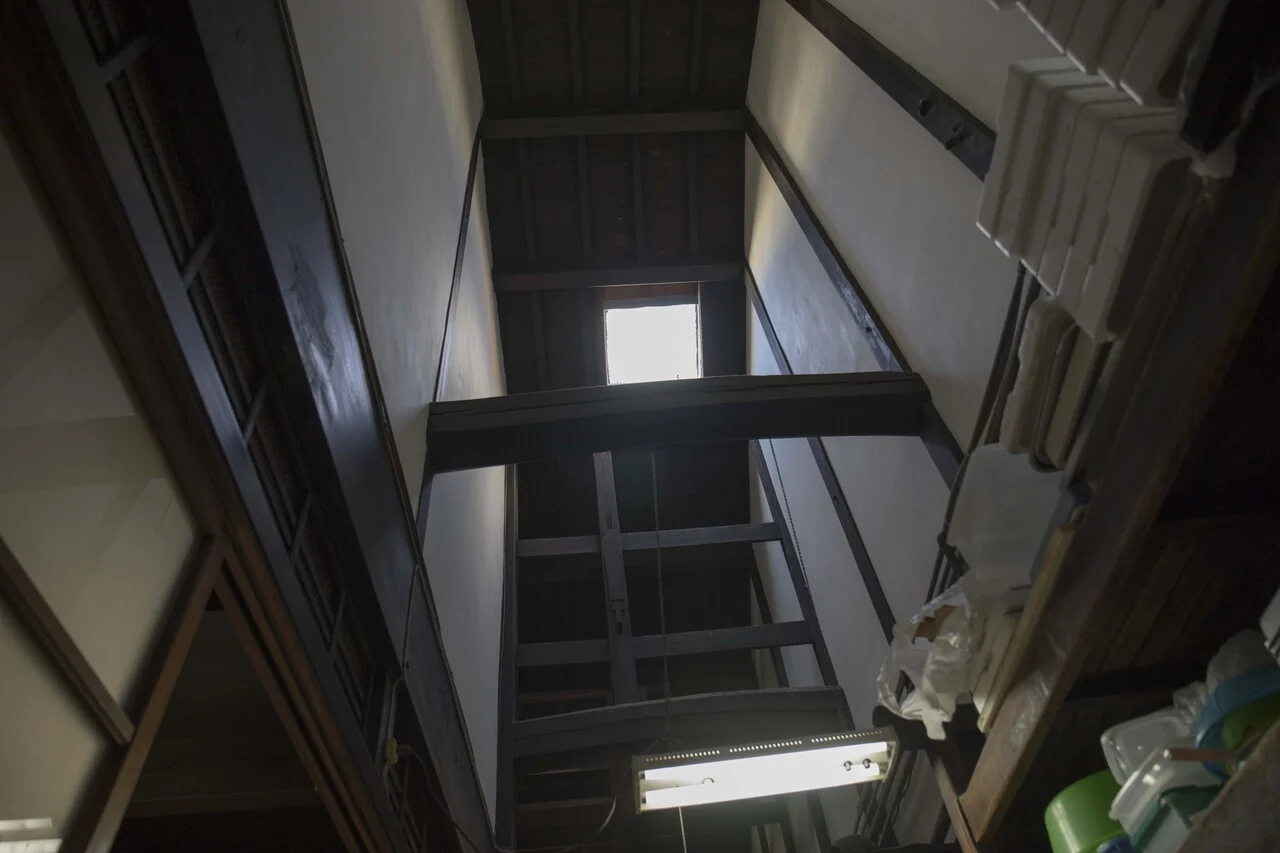
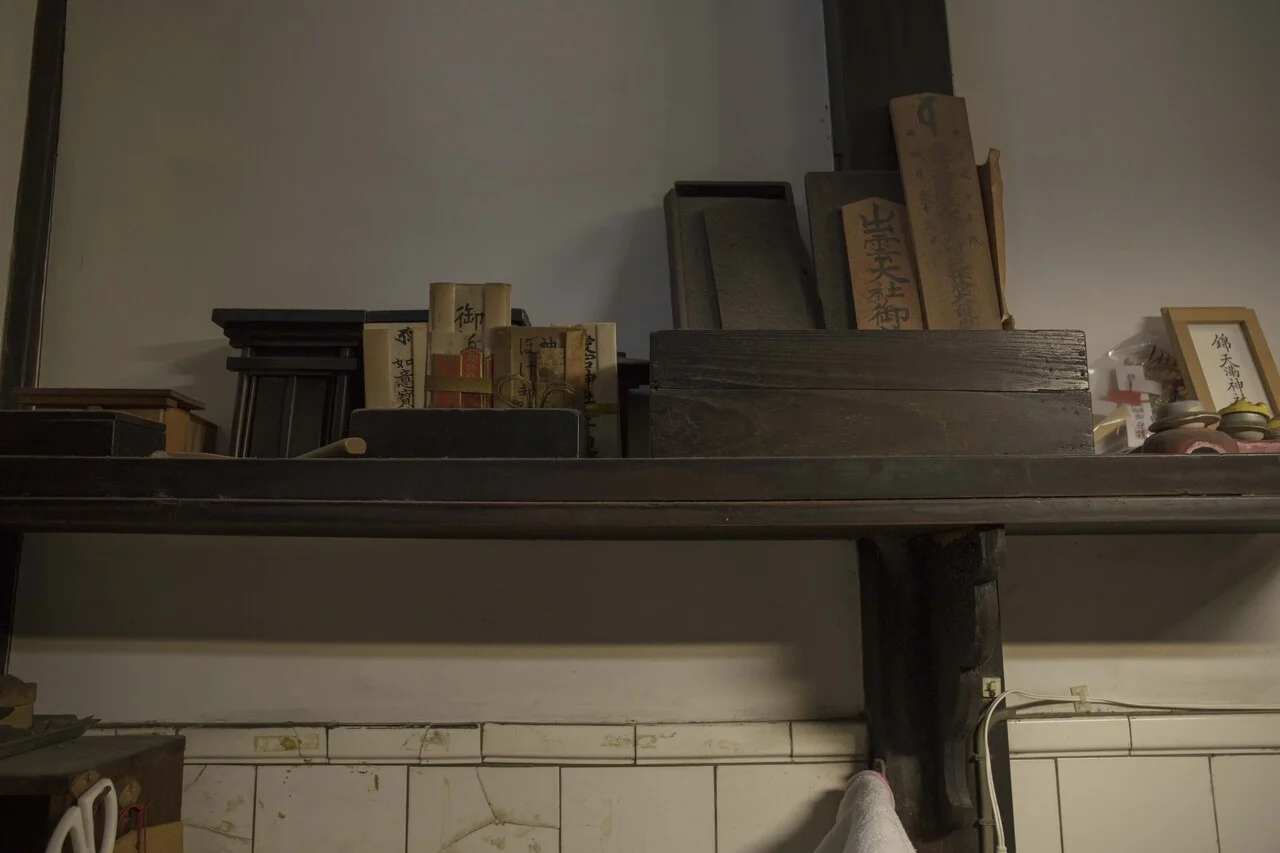
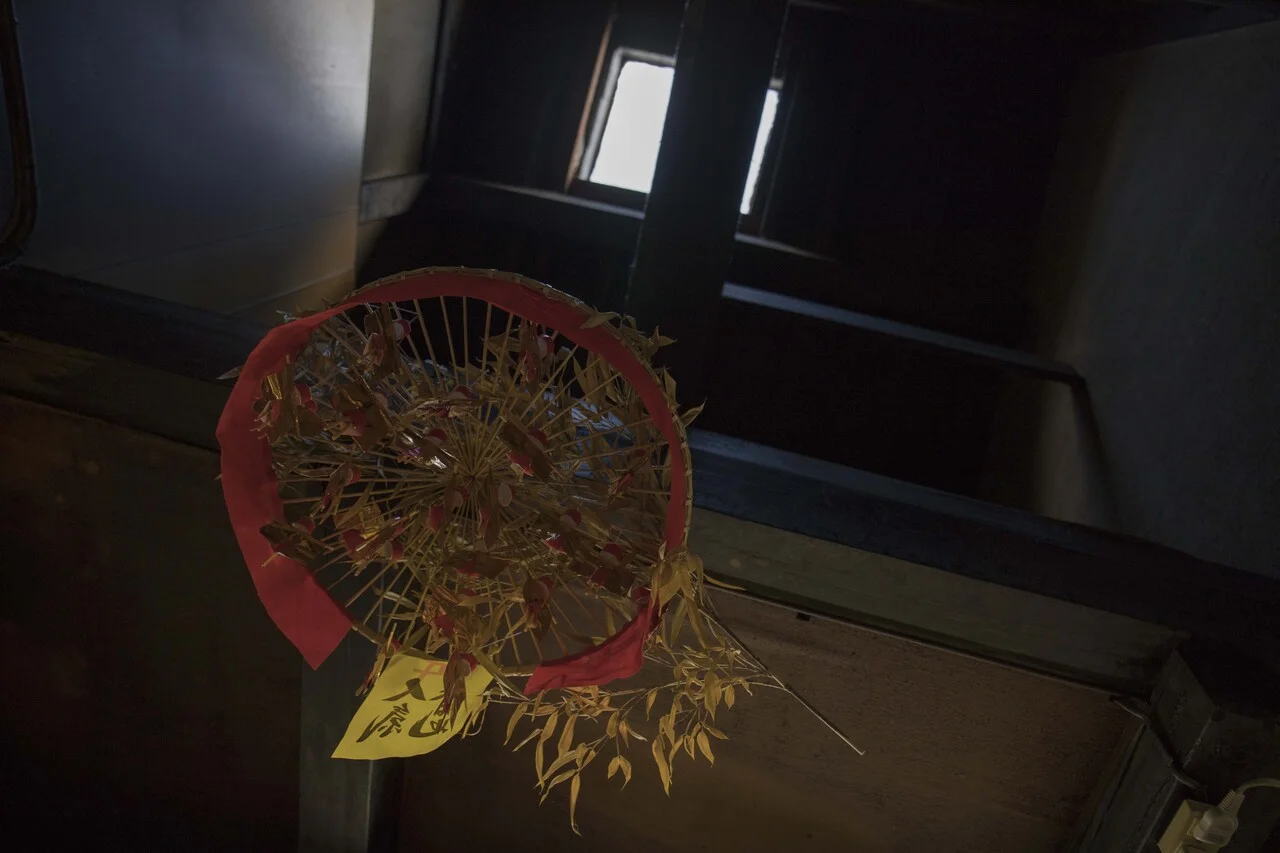
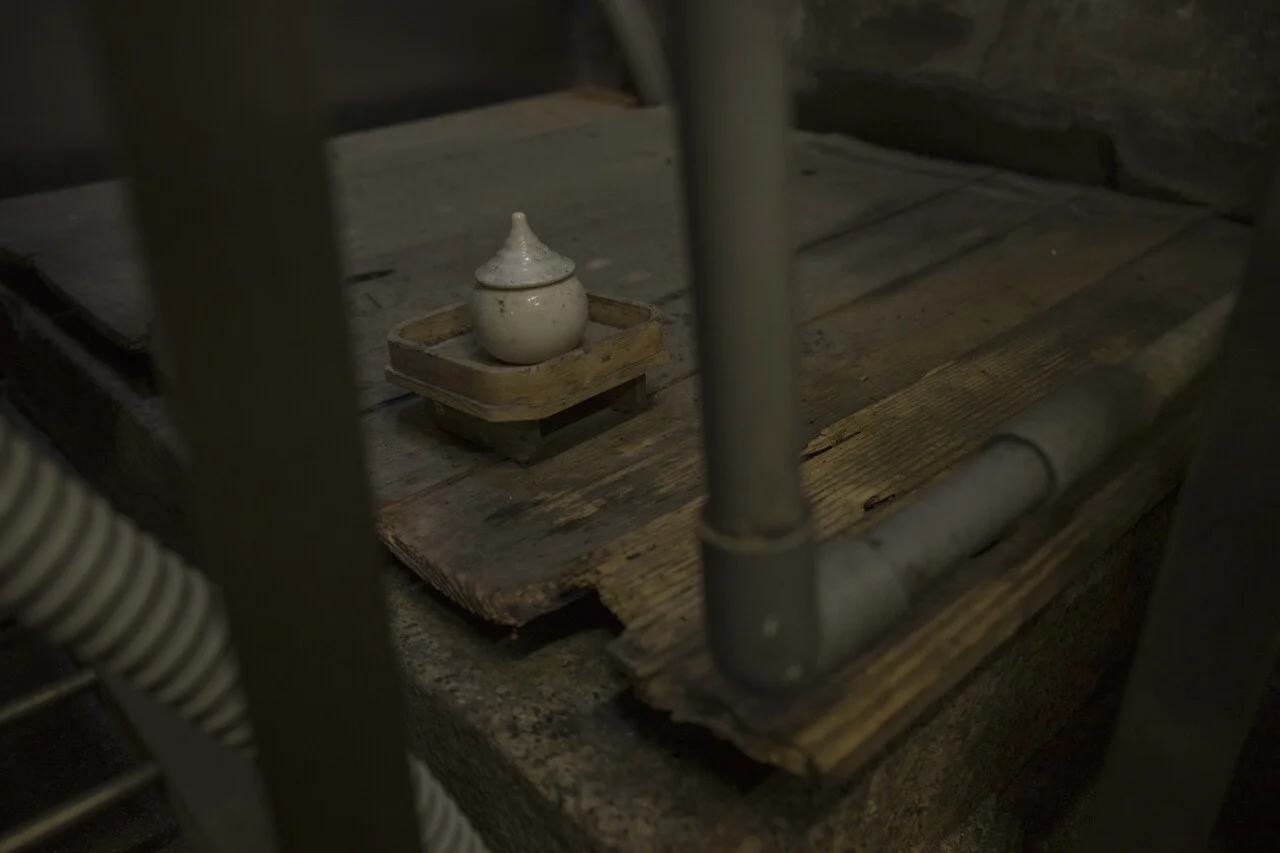



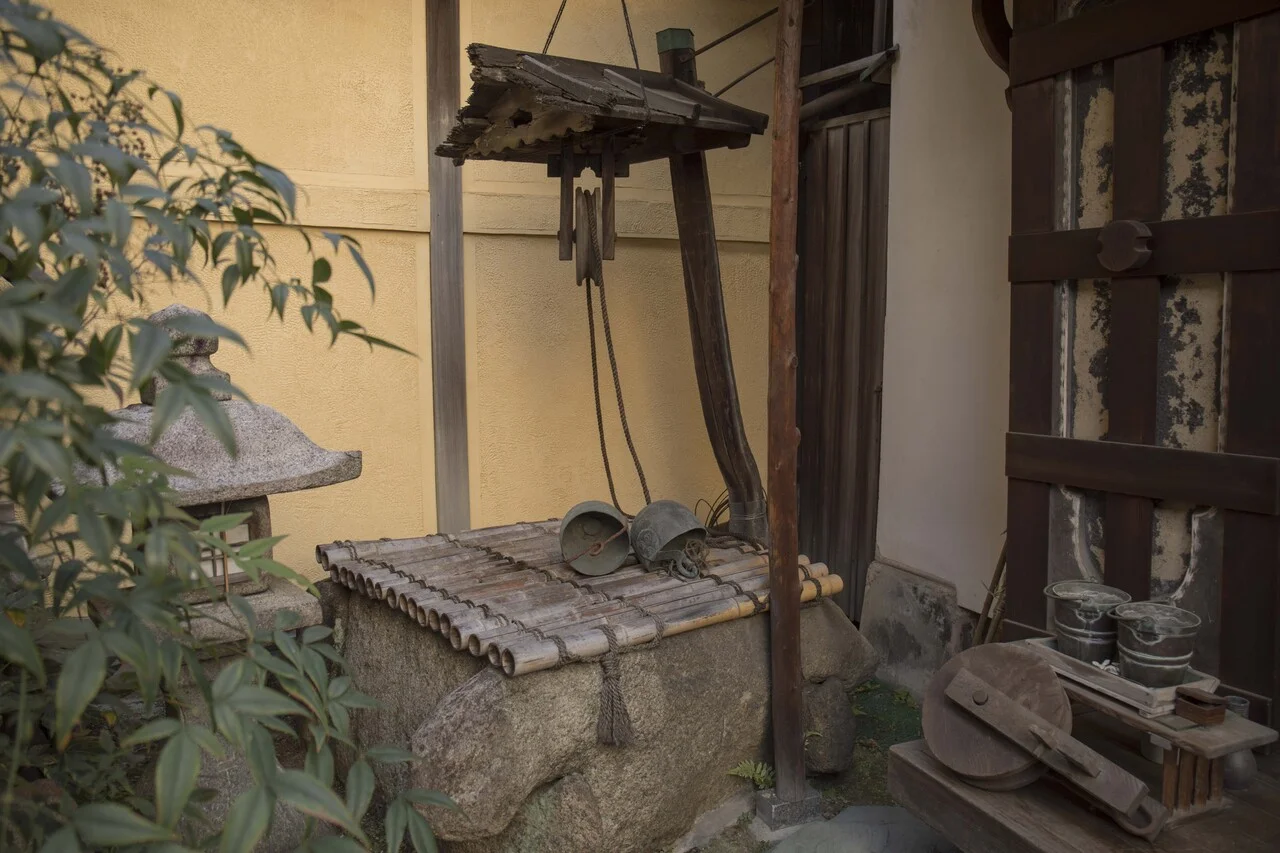
Business in the front, business in the back.
There is a saying in Nishiki Market, omote no shobai, oku no shobai.”
The term “omote no shobai,” meaning “front business,” refers to sales to the general public. “Oku no shobai” (“back business”) refers to wholesales to ryotei (traditional Japanese-style restaurants) and ryokan (traditional Japanese-style inns), not to the general public. Another usage of the word “oku” is found in “okunoma,” which in Nishiki means a workspace at the back of a store.
I was shown examples of such “backrooms” and “back business” by Yubakichi and Maruyata.
Yubakichi was established in 1790, during the Edo period, and is the only yuba (soybean milk skin) producer and seller in Nishiki Market. Even today, they continue to make their products by hand in the backroom of the store.
Maruyata, whose customers include long-established ryokan and famous ryotei restaurants, only does “back business.” Live fish swimming in a tank at the back of the store, which cannot be seen from the street, are Maruyata’s main merchandise.
As an aside, the owner of Yubakichi says, “‘oku no shobai’ means wholesale, but it also means special merchandise only for regular customers who have a long and deep business relationship with us.”

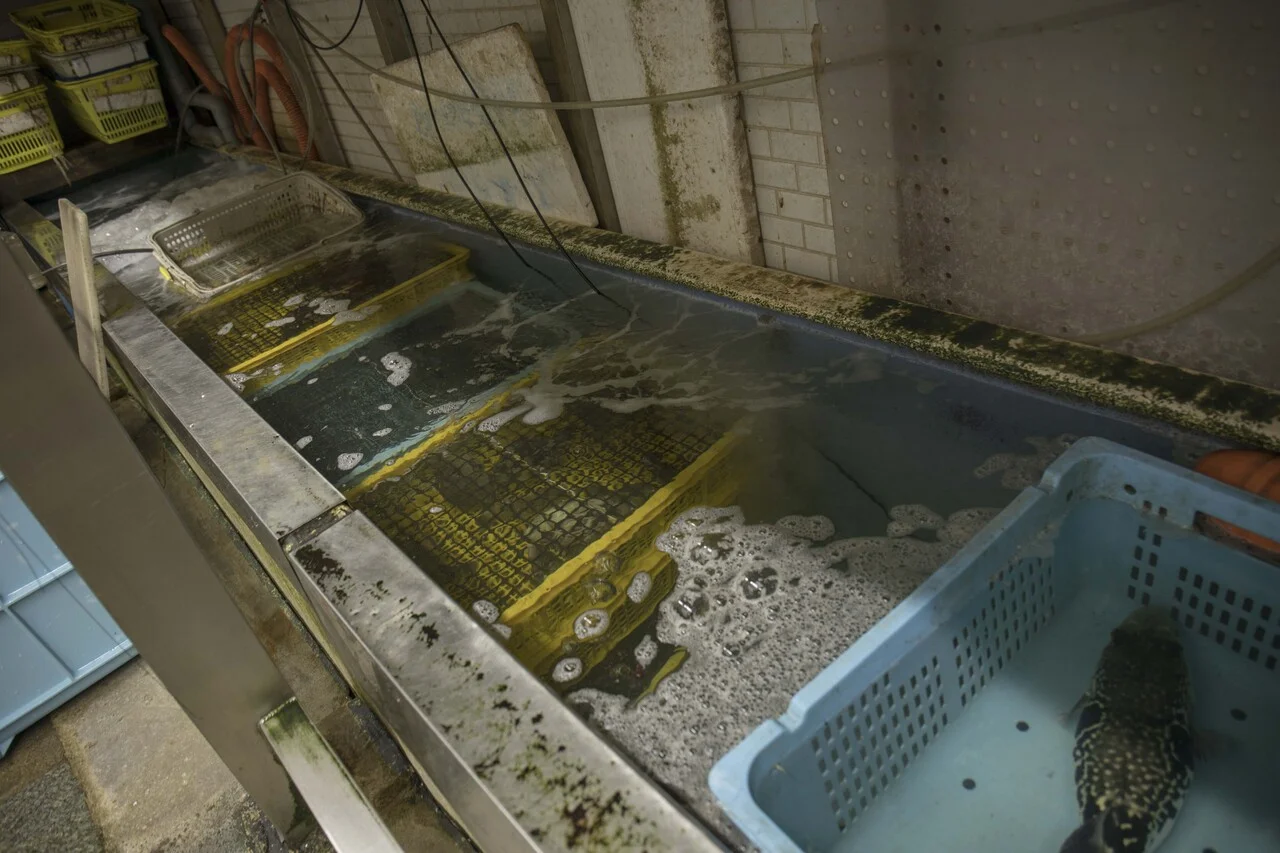
Gold wells, silver wells.
o far, I have written a lot about Nishiki Market and its groundwater here, but I also heard this story from Chairperson Utsu.
He said, “Traditionally, in Nishiki Market, every store has two wells: one is called the ‘gold well’ and the other is called the ‘silver well.’ Do you know what that means?”
When I said frankly, “I don’t know,” he replied that “gold wells are wells that bring in money and are used for stores, while silver wells are used for drinking and washing water and are for homes.”
Even today, Nishiki’s groundwater is pumped up by motor from the ground as part of the market association’s well-water management activity.
The water is delivered to each restaurant. Good water is an essential ingredient in the Kyoto food culture, which makes the most of dashi (soup stock) with a light flavor. It is said that the good water was the reason why Nishiki became one of the three san-tana fish wholesale markets during the Edo period (1603-1868). All of those three markets had good water.
The history of water is the history of Nishiki. It is no exaggeration to say that this groundwater is the lifeblood of Nishiki.
Nishiki Market will continue to develop into the future, taking care of this water.
*San-tana fish wholesalers: The Tokugawa Shogunate first allowed the title of fish wholesaler and designated the Kami-no-tana, Nishiki-no-tana, and Rokujo-no-tana as the three privileged fresh fish wholesale markets of Kyoto. This marked Nishiki’s first step toward becoming a full-scale fish market.
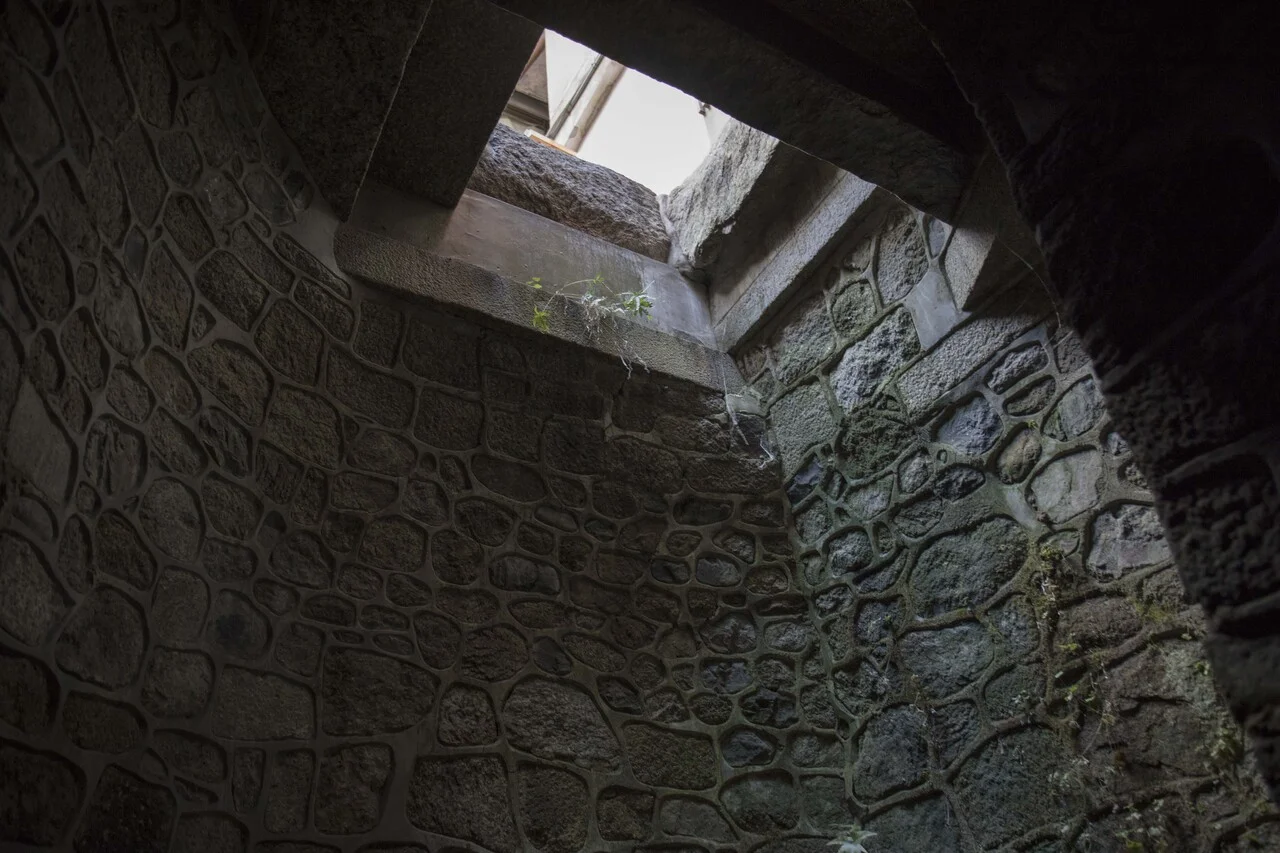
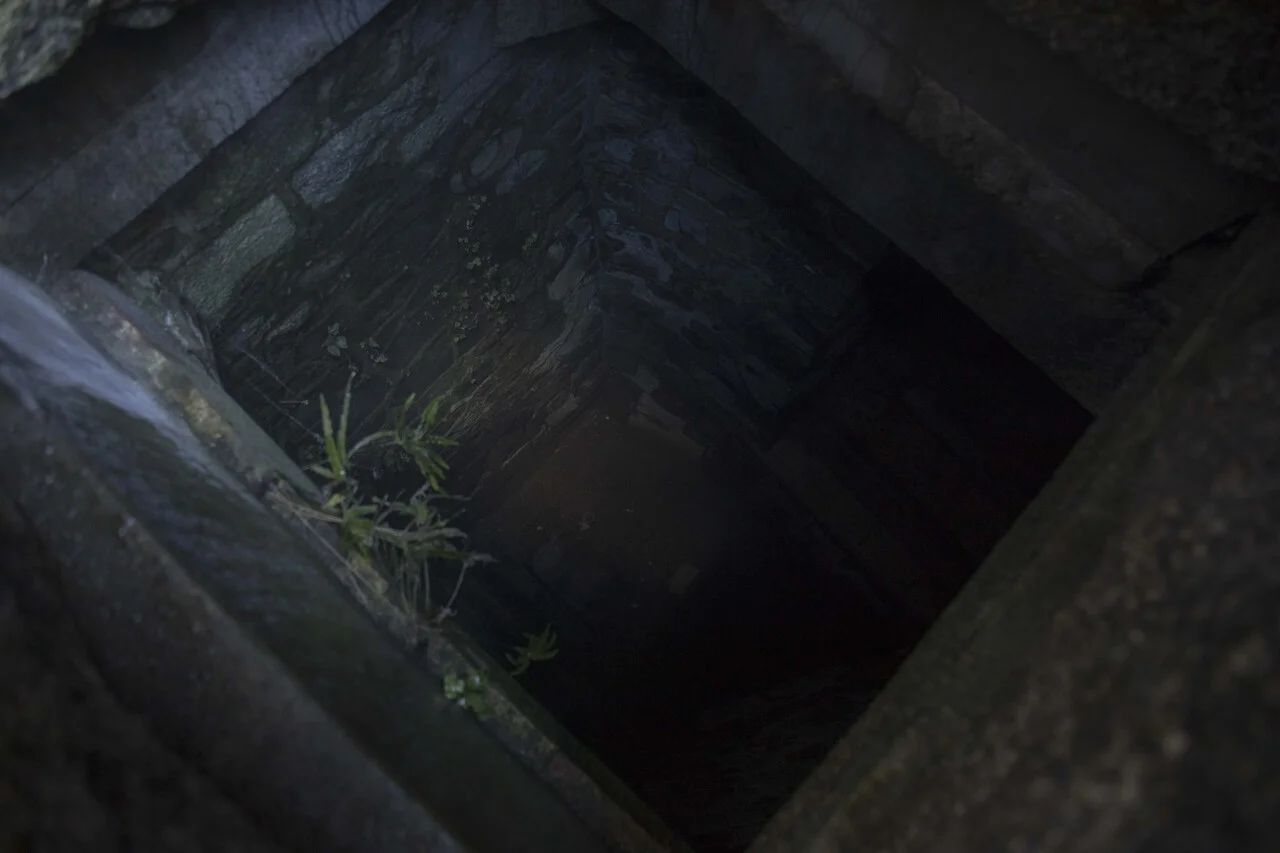
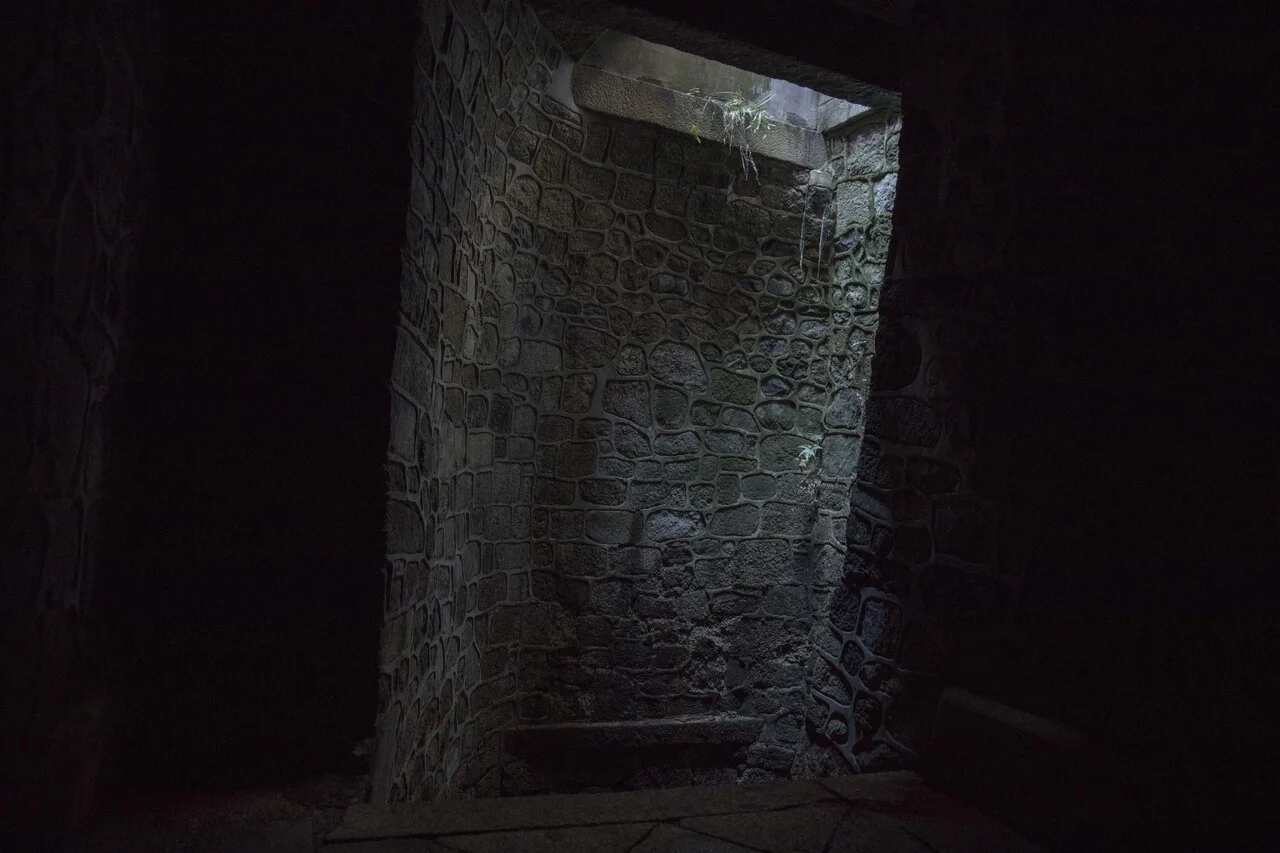
June and July are all about the mikoshi.
In 1947, when the wounds of the Pacific War had begun to heal, the children’s mikoshi (sacred religious palanquin) was revived at Nishiki Market.
Director Mita also participated in the mikoshi-carrying at the time.
When they became high school students, the four participated in the Gion Festival and carried the adults’ mikoshi. They had been waiting to do this for a long time. They say, “It was the rainy season and my body was feeling tired, but when I carried the mikoshi and sweated, for some reason my body felt refreshed.” They say the mikoshi-carrying has strengthened the unity of the youth division of the market association, and when everyone gathers together in the months of June and July, the mikoshi is all they talk about.
The mikoshi-carrying of the Gion Festival allows the entire Nishiki Market to come together as one.
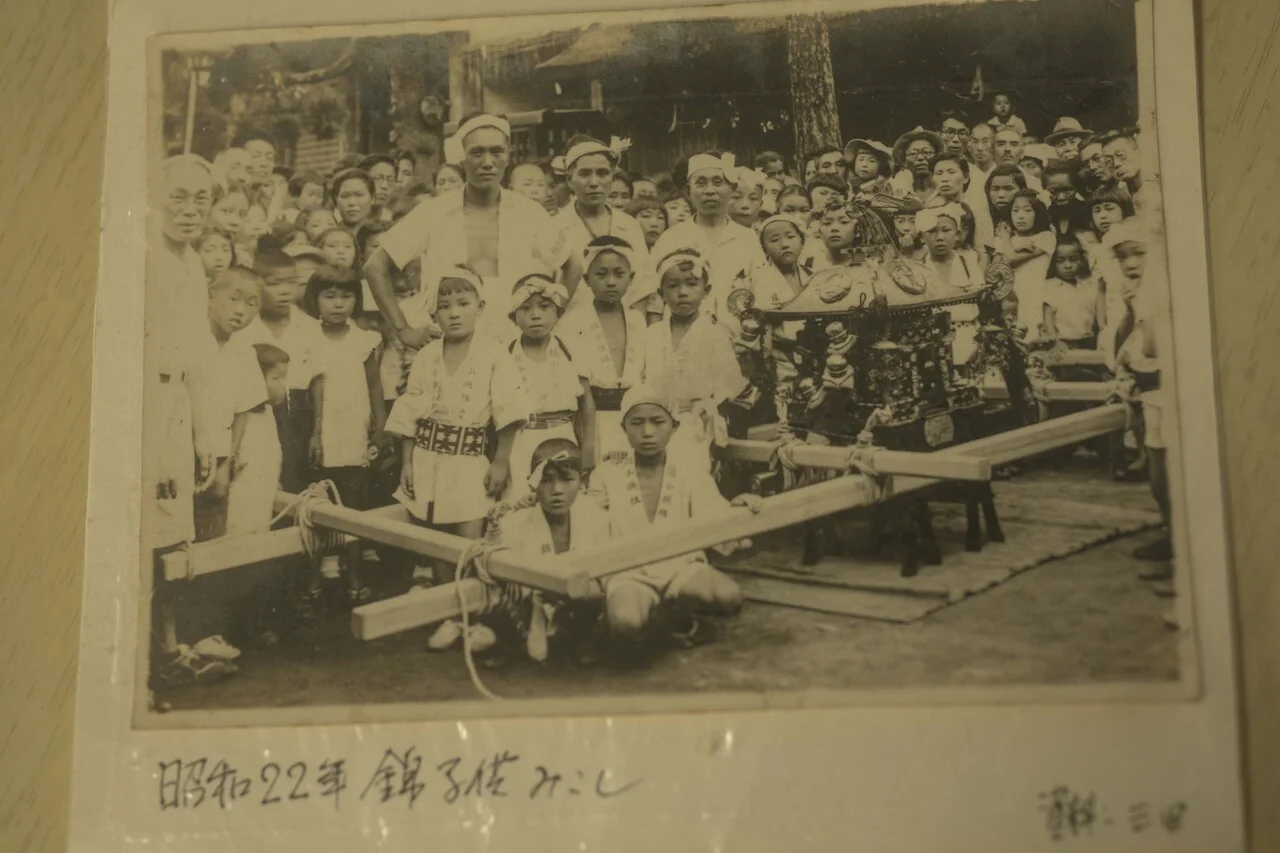
A few side-stories.
This is a story that Chairperson Utsu was told by Mr. Kuwayama’s great-uncle (grandfather’s younger brother).
“The first arrival of fish and vegetables at the market is called “hashiri,” meaning “running,” which comes from the fact that the first fish to arrive at the landing place on Katsura River were carried by foot to Nishiki Market by running couriers.”
There are also various other known origins to this use of the word “hashiri” in Nishiki, but this anecdote conveys the liveliness and vigor of Nishiki Market at the time.
I asked the four elder members of Nishiki Market about the origin of Nishiki Market being called “Kyoto’s kitchen” and when it first came to be called that.
They say it was already being called that when they were little, as far as they can remember.
“As one of the three fish wholesale markets in Kyoto, Nishiki thrived during the Edo period, and the number of stores handling various foodstuffs increased. This is just a guess, but the appellation might have naturally occurred in that period.”
“The athletic field is still as small as ever. (Laughs)”
At the end of the interview, we walked to Seisho Elementary School, which all four attended.
This school was a “bangumi” elementary school, as it was established by a bangumi, which is like today’s neighborhood association. It is one of the oldest schools in Kyoto, but has now been integrated with other elementary schools and closed down.
“Shimamoto-san could run so fast.” “We went to elementary and junior high school together every day.” “The athletic field is still as small as ever.”
I think it is fair to say that the “spirit of Nishiki” lies at the root of what I have heard today. It is this “spirit of Nishiki” that I hope will be passed on to the next generation.
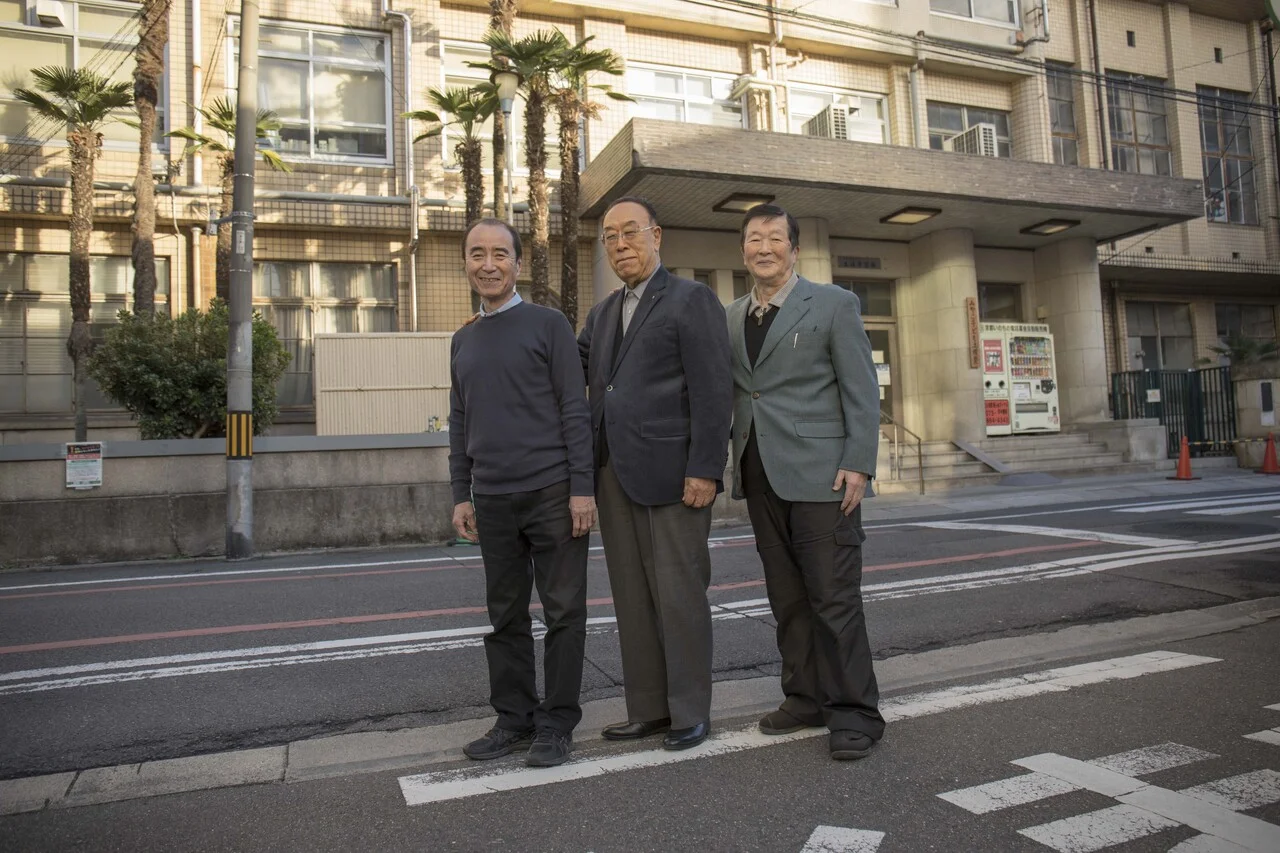
Thank you all for your time.
(Date of interview: December 17, 2020)


